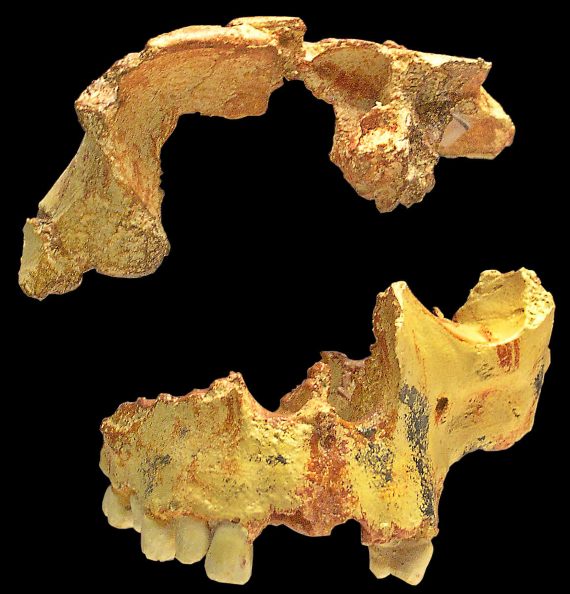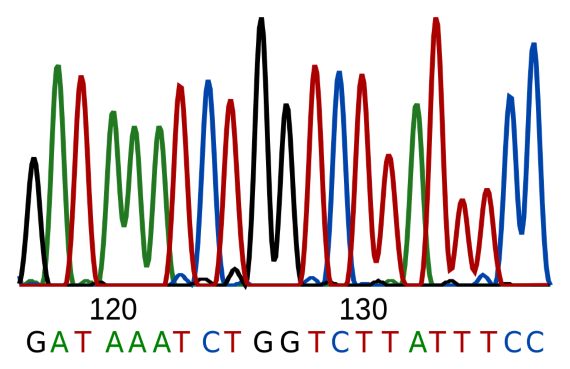Researchers from CENIEH and the University of Copenhagen have recently identified 800,000-year-old fossil teeth at Atapuerca that belonged to Homo antecessor. They have found this out by recovering proteins from dental enamel, doing a DNA sequencing and then comparing this with the modern equivalent version, in what has turned out to be the oldest genetic evidence of human (or hominin) origin obtained to date.

Since the end of the 20th century, genetics has become one of the main and most important tools of anthropologists and palaeontologists. This is largely thanks to the so-called “molecular approach,” a kind of molecular evolutionary clock which makes it possible to estimate the time elapsed between two species (or two specimens of the same species) based on the molecular divergence that exists between them, a technique that was introduced by Linus Pauling and Emile Zuckerkandl in the 1960s.
Brainteaser 1:
Pauling and Zuckerkandl compared the amino acid sequences corresponding to proteins of different species and found that the closer they are in evolutionary terms, the more similar these sequences are. By studying the hemoglobin of humans and chimpanzees, they discovered that the delta subunit, consisting of 147 amino acids, only differs in one localized amino acid. See if you can spot in which place they differ:
Human delta haemoglobin:
MVHLTPEEKTAVNALWGKVNVDAVGGEALGRLLVVYPWTQRFFESFGDLSSPDAVMGNPKVKAHGKKVLGAFSDGLAHLDNLKGTFSQLSELHCDKLHVDPENFRLLGNVLVCVLARNFGKEFTPQMQAAYQKVVAGVANALAHKYH
Chimpanzee delta haemoglobin:
MVHLTPEEKTAVNALWGKVNVDAVGGEALGRLLVVYPWTQRFFESFGDLSSPDAVMGNPKVKAHGKKVLGAFSDGLAHLDNLKGTFSQLSELHCDKLHVDPENFRLLGNVLVCVLARNFGKEFTPQVQAAYQKVVAGVANALAHKYH
Solution 1
Pauling and Zuckerkandl focused on protein amino acid sequences because at that time the study of DNA was still in its infancy. It should be remembered that the structure of the double helix had only been unravelled in 1953; the mechanism by which DNA encodes and controls protein synthesis had not yet been deciphered and the techniques for sequencing genetic material were still science fiction.

In 1975, Mary Claire King and Allan Wilson finally made the jump from comparative protein analysis to DNA analysis. Since DNA sequencing techniques had not yet been developed, both researchers looked for a “shortcut” or alternative method, which turned out to be the DNA hybridization technique. The rationale for this is that the two complementary strands of DNA that form the double helix can be separated when the sample of genetic material is heated to 95°C. When the two strands are not perfectly complementary —because they correspond to different individuals, populations or species— they will separate at a lower temperature, and the greater the difference or divergence between them the lower the temperature. Operating in this way, King and Wilson estimated that human and chimpanzee DNA differed by only 1%. This result was obtained 25 years before the human genome was first sequenced, and yet it was strikingly accurate.
As we have seen, the basis of this molecular evolutionary clock is relatively simple: it involves comparing the sequence of the same molecule (a protein, a genome sequence, a gene…) of two different specimens and quantifying the differences between them. The more they differ, the more time will have passed since the two species separated; or, as in the initial research, from the moment Homo antecessor lived to the present moment (and modern humans).
This molecular clock also “marks” the next challenge:
Brainteaser 2:
Compare these two fragments of sequenced DNA from two different species but with a common origin and estimate the time since both evolutionary branches separated if we assume that, on average, three mutations or base modifications are introduced into the DNA sequence every 150,000 years.
Sample 1:
ATGGTGCATCTGACTCCTGAGGAGAAGTCTGCCGTTACTGCCCTGTGGGGCAAGGTGAACGTGGATGAAGTTGGTGGTGAGGCCCTGGGCAGGCTGCTGGTGGCTACCCTTGGACCCAGAGGTTCTTTGAGTCCTTTGGGGATCTGTCCACTCCTGATGCTGTTATGGGCAACCCAAGGTGAAGGCTCATGGCAAGAAAGTGCTCGGTGCCTTTAGTGATGGCCTGGCTCACCTGGACAACCTCAGGGCACCTTTGCCACACTGAGTGAGCTGCACTGTGACAAGCTGCACGTGGATCCTGAGAACTTCAGGCTCTGGGCAACGTGCTGGTCTGTGTGCTGGCCCATCACTTTGGCAAAGAATTCACCCCACCAGTGCAGGCTGCCTATCAGAAAGTGGTGGCTGGTGTGGCTAATGCCCGGCCCACAAGTATCACTAA
Sample 2:
ATGGTGCATCTGACGCCTGAGGAGAAGTCTGCCGTTACAGCCCTGTCGGGCAAGGTGAACGTGGATGAAGTTGGTGGTGAGGCCCTGGGCAGGCAGCTGGTGGCTACCCTTGGACCCAGAGGTTCTTTGACTCCTTTGGGGATCTGTCCACTCCTGATGCTGTTATGGGCAACCCAAGGTGAAGGCTCATTGCAAGAAAGTGCTCGGTGCCTTTAGTGATGGCCTGACTCACCTGGACAACCTCAGGGCACCTTTGCCACACTGAGTGAGCTGCACTGTGACAAGCTGCACGTGGATCGTGAGAACTTCAGGCTCTGGGCAACGTGCTGGTCTGTGTGCTGGCCCATCACTTTGGCAACGAATTCACCCCACCAGTTCAGGCTGCCTATCAGAAAGTGGTGGCTGGTGTGGCTAATGCCCGGCCTACAAGTATCACTAA
Solution 2
Miguel Barral
@migbarral
Comments on this publication